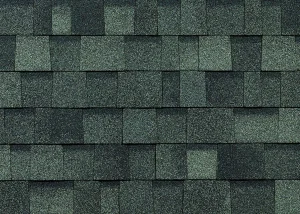
When you think of a green roof, what comes to mind? For most of us, it’s a sea of dark blue solar panels. And sure, photovoltaic (PV) systems are fantastic. But honestly, they’re just one player on a much bigger, more exciting field.
The truth is, your roof is a massive, untapped asset. It’s exposed to sun, wind, rain, and even temperature differences. What if you could harness more than just sunlight? Well, you can. Let’s dive into the world of roof-integrated renewable energy systems that go way beyond traditional solar panels.
Why Look Beyond Solar Panels?
Solar power is, without a doubt, the reigning champion. But it has its limitations. It only generates electricity when the sun is shining. Nighttime, cloudy days, and winter months can really put a dent in your energy production. That intermittency is a real pain point for homeowners seeking true energy independence.
By diversifying your roof’s energy portfolio, you can create a more resilient and consistent power system. Think of it like investing. You wouldn’t put all your money in one stock, right? The same logic applies to your home’s energy generation.
The Quiet Power of Solar Thermal
First up, let’s talk about a technology that often gets overshadowed by its flashy PV cousin: solar thermal. This isn’t about making electricity. It’s about capturing heat directly from the sun and using it to warm your home or your water.
How It Works & What’s New
Modern solar thermal systems for roofs are incredibly efficient. They typically involve flat plates or evacuated tubes filled with a heat-transfer fluid. This fluid gets hot—fast—and that heat is then used for your domestic hot water or even to support your radiant floor heating.
The real game-changer here is integration. We’re now seeing solar thermal roof tiles and built-in solar thermal collectors that blend seamlessly with your roofline. No bulky add-ons. They become the roof itself. For households with high hot water demand, this can slash your gas or electricity bills dramatically.
Harnessing the Breeze: Small-Scale Wind Power
Wind turbines on a roof? It sounds a bit out there, but the technology is maturing. We’re not talking about the giant, rural windmills you see on farms. These are compact, often vertical-axis wind turbines (VAWTs) designed specifically for the turbulent air flows found in urban and suburban settings.
The Reality Check and The Potential
Okay, let’s be real. Rooftop wind has faced its share of skepticism. Early models were noisy, inefficient, and sometimes caused structural vibrations. But the latest designs are tackling these issues head-on with improved aerodynamics and vibration-dampening mounts.
The beauty of a rooftop wind energy system is that it can generate power 24/7, as long as there’s a breeze. This makes it a perfect complement to solar. When the sun goes down, the wind might just pick up. Combining both technologies can smooth out your energy production curve in a way that’s genuinely exciting.
The Hidden Gem: Green Roofs as Energy Savers
This one is less about generating power and more about drastically reducing your need for it. A green roof, or living roof, is a layer of vegetation planted over a waterproofing membrane. It’s not just a pretty garden in the sky—it’s a powerful passive energy system.
Here’s how it works:
- Natural Insulation: The soil and plants provide excellent thermal mass, keeping your building cooler in the summer and warmer in the winter.
- Reduced Heat Island Effect: While conventional dark roofs absorb heat, green roofs stay cool through evaporation.
- Stormwater Management: They absorb rainwater, reducing runoff and taking pressure off municipal systems.
The energy savings from reduced heating and cooling loads can be substantial. It’s a passive, elegant solution that pays you back for decades.
The Future is Hybrid: Combining Systems
This is where things get truly interesting. The most advanced renewable energy roofing solutions aren’t choosing one technology. They’re combining them. Imagine a roof that’s part solar panel, part solar thermal collector, and part wind-capturing surface.
Researchers and forward-thinking companies are already prototyping these hybrid systems. For instance, a solar panel’s efficiency drops as it gets hot. But what if you could cool it by circulating fluid behind it—fluid that then captures that waste heat for your solar thermal system? That’s the kind of synergy we’re starting to see.
| System Type | Primary Energy Output | Best For |
| Photovoltaic (Solar Panels) | Electricity | Daytime power, reducing electric bills |
| Solar Thermal | Heat | Homes with high hot water or heating demands |
| Rooftop Wind | Electricity | Windy locations, 24/7 generation to complement solar |
| Green Roof | Energy Savings | Passive cooling/heating, urban stormwater management |
What’s Holding These Technologies Back?
It’s not all smooth sailing, of course. Widespread adoption faces a few hurdles. Upfront costs for some of these integrated systems can be high, though they’re falling. Local building codes and zoning laws haven’t always kept pace with the technology. And, you know, there’s a general lack of awareness. Most people—and even some contractors—just don’t know these alternatives exist.
That said, the trend is moving toward holistic building design. The idea of a roof as a mere shield from the elements is becoming outdated. The modern roof is an active, multi-functional component of your home’s ecosystem.
A Final Thought
The next time you look up at your roof, try to see it not as a passive shingled surface, but as a potential power plant, a thermal manager, and a living ecosystem. The future of home energy isn’t just about slapping on a single solution. It’s about integration, synergy, and making the most of every single resource available to us.
It’s a shift from simply having a roof over your head to having a roof that works for you.







